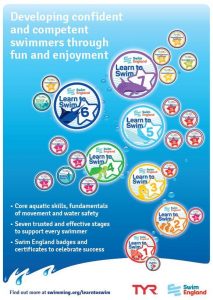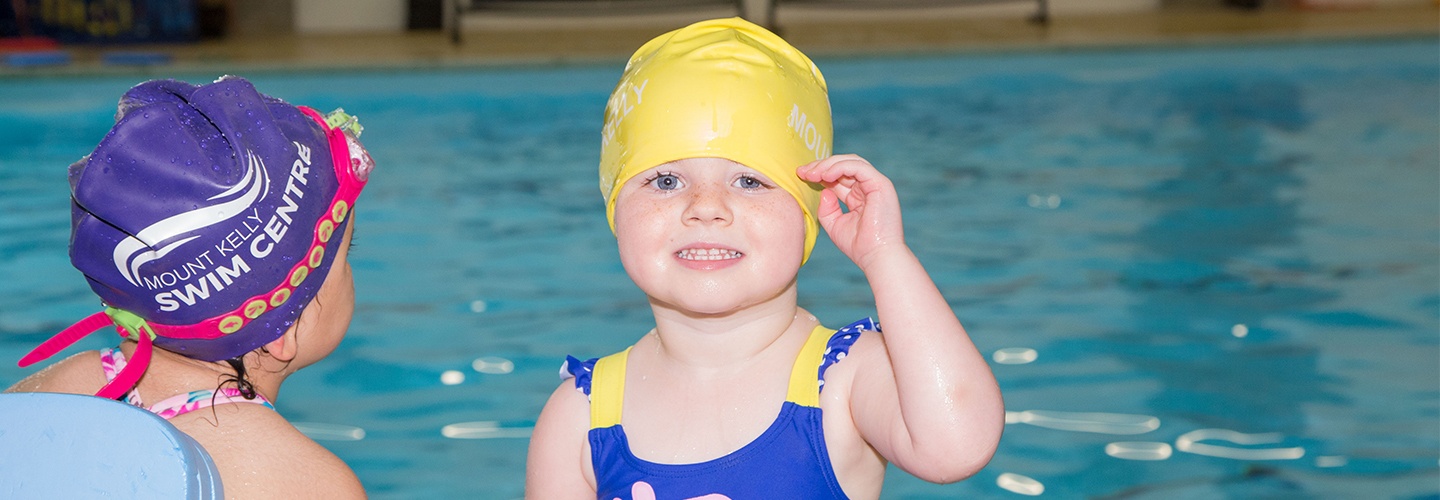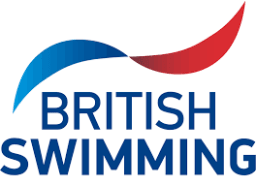
As a provider of the Swim England (previously know as the ASA) ‘Learn to Swim’ Programme, we believe it is imperative that we focus on a high standard of service which gives the best value and quality of swimming education that we can possibly provide. We achieved Aquamark Approved Centre status in April 2005 showing our dedication to excellence.
Our children’s swimming lessons run on Wednesday and Thursday evenings and Saturday mornings, and are split into different stages depending on the child’s ability.
We cater for all abilities from the age of 4, from total non swimmers up to children who have reached a competitive standard.
We run a continuous assessment programme whereby each child progresses at their own pace and ability with the opportunity to achieve an award as each level is attained. On poolside you will see our teachers with iPods assessing the children during their swimming lessons. This information is updated instantly allowing parents to view the progress made each week via the Course Progress system.
Swim England – Duckling Awards
Duckling Awards are designed to help toddlers enjoy learning to swim with help from their parents or guardians.
With Duckling Awards your child can work towards four different colourful awards. Each award has its own certificate, badge and sticker.
Duckling 1 will see children start to move by themselves in the water.
By Duckling 4 they will be jumping in, going underwater, floating and swimming five metres without support.
Duckling Awards are great at promoting increased independence and water confidence to help prepare for Stage 1 of the Learn to Swim Framework.
Duckling 1
- Make a supervised safe entry with adult support if required.
- Float on back with adult support behind the head without floatation equipment.
- Blow bubbles at the water surface.
- Wet the head without submersion.
- Kick 5 metres on back with adult support.
- Travel without adult support for 2 metres to a floating object.
- Enter the pool, rotate and return to the side with adult support.
- Exit the water safely with minimal adult support.
Duckling 2
- Make a sitting entry with adult support if required.
- Rotate 180 degrees either using a log roll or an upright position, using floatation equipment and without adult support.
- Submerge the face with confidence and without force under adult supervision.
- Blow an object for a distance of 2 metres.
- Travel 3 metres using arms and/or legs without adult support.
- Move 5 metres along the rail or wall without adult support.
- Enter the pool, rotate and return to the side with minimal adult support.
- Exit the water safely with minimal adult support.
Duckling 3
- Make a supervised jump to an adult with or without support.
- Float on the front or back without adult support.
- Push off on the front or back in a streamlined shape from a supporting adult.
- Blow bubbles with the mouth and nose underwater.
- Travel 5 metres on the front to the side of the pool without adult support.
- Kick 5 metres on the front holding a float (the adult may hold the other end of the float).
- Enter the pool, rotate and return to the side without adult support.
- Climb out of the water with adult support if required.
Duckling 4
- Jump into the water unaided, but supervised.
- Perform a mushroom or star float.
- Rotate 360 degrees either using a log roll or an upright position.
- Push and glide achieving a streamlined position on the front or back.
- Submerge completely.
- Travel 10 metres on the front or back, without adult support.
- Jump into the water, turn around, swim back to the point of entry and hold on to the side or rail.
- Climb out of the water with adult support if required.
Swim England – Learn to Swim Awards 1-7
The Swim England Learn to Swim Awards 1-7 are divided into progressive stages. They make up the core, national syllabus of learning to swim for primary school aged children.
They are designed to reward your child for their development of the essential aquatic skills they need to be confident, competent and safe in the water.
Each of the Swim England Learn to Swim Awards 1-7 stages has a list of clear outcomes that need to be completed in order to gain each award.
By the end of each Stage of the Swim England Learn to Swim Framework pupils should have reached all outcomes for that stage. Swimmers must complete these outcomes with or without aids, equipment or support.
Stage 1
- Enter the water safely.
- Move forward for a distance of 5 metres, feet may be on or off the floor.
- Move backwards for a distance of 5 metres, feet may be on or off the floor.
- Move sideways for a distance of 5 metres, feet may be on or off the floor.
- Scoop the water and wash the face.
- Be comfortable with water showered from overhead.
- Move from a flat floating position on the back and return to standing.
- Move from a flat floating position on the front and return to standing.
- Push and glide in a flat position on the front from a wall.
- Push and glide in a flat position on the back from a wall.
- Give examples of two pool rules.
- Exit the water safely.
- 5 metre Distance Award
Stage 2
- Jump in from poolside safely.
- Blow bubbles a minimum of three times rhythmically, with nose and mouth submerged.
- Move from a flat floating position on the back and return to standing without support.
- Move from a flat floating position on the front and return to standing without support.
- Push from a wall and glide on the back – arms can be by the side or above the head.
- Push from a wall and glide on the front with arms extended.
- Travel using a recognised leg action with feet off the pool floor on the back for 5 metres, without the use of floatation equipment.
- Travel using a recognised leg action with feet off the pool floor on the front for 5 metres, without the use of floatation equipment.
- Perform a tuck to rotate from a flat floating position on the front, to a back floating position, then return to standing.
- Perform a tuck to rotate from a flat floating position on the back, to a front floating position, then return to standing.
- Perform a log roll from the back to the front.
- Perform a log roll from the front to the back.
- Exit the water without support.
- 5 metre Distance Award
Stage 3
- Jump in from poolside and submerge.
- Sink, push away from wall and maintain a streamlined position.
- Push and glide on the front with arms extended and log roll onto the back.
- Push and glide on the back with arms extended and log roll onto the front.
- Travel 5 metres on the front, perform a tuck to rotate onto the back and return on the back.
- Fully submerge to pick up an object.
- Correctly identify three of the four key water safety messages.*
- Push and glide and travel 10 metres on the back.
- Push and glide and travel 10 metres on the front.
- Perform a tuck float and hold for three seconds.
- Exit the water without using steps.
*The four key water safety messages include:
1. Always swim in a safe place.
2. Always swim with an adult.
3. If you fall in, float, breathe, relax.
4. If someone else in trouble, call 999/112.
- 10 metre Distance Award
Stage 4
- Perform a sequence of changing shapes (minimum of three) whilst floating on the surface and demonstrate an understanding of floating.
- Push and glide from the wall towards the pool floor.
- Kick 10 metres backstroke (one item of equipment optional).
- Kick 10 metres front crawl (one item of equipment optional).
- Kick 10 metres butterfly on the front or on the back.
- Kick 10 metres breaststroke on the front (one item of equipment optional).
- Perform a head first sculling action for 5 metres in a flat position on the back.
- Travel on back and log roll in one continuous movement onto front.
- Travel on front and log roll in one continuous movement onto back.
- Push and glide and swim 10 metres, choice of stroke is optional.
- 20 metre Distance Award
Stage 5
- Perform a flat stationary scull on the back.
- Perform a feet first sculling action for 5 metres in a flat position on the back.
- Perform a sculling sequence with a partner for 30-45 seconds to include a rotation.
- Tread water for 30 seconds.
- Perform three different shaped jumps into deep water.
- Push and glide and swim 10 metres backstroke (performed to Swim England expected standards).
- Push and glide and swim 10 metres front crawl (performed to Swim England expected standards).
- Push and glide and swim 10 metres breaststroke (performed to Swim England expected standards).
- Push and glide and swim 10 metres butterfly (performed to Swim England expected standards).
- Perform a handstand and hold for a minimum of three seconds.
- Perform a forward somersault.
- Demonstrate an action for getting help.
- 25 metre Distance Award
Stage 6
- Give two examples of how to prepare for exercise and understand why it is important.
- Sink, push off on side from the wall, glide, kick and rotate into backstroke.
- Sink, push off on side from the wall, glide, kick and rotate into front crawl.
- Swim 10 metres wearing clothes.
- Push and glide and swim front crawl to include at least six rhythmical breaths.
- Push and glide and swim breaststroke to include at least six rhythmical breaths.
- Push and glide and swim butterfly to include at least three rhythmical breaths.
- Push and glide and swim backstroke to include at least six regular breaths.
- Push and glide and swim 25 metres, choice of stroke is optional (performed to Swim England expected standards).
- Perform a ‘shout and signal’ rescue.
- Perform a surface dive.
- 50 metre Distance Award
- 100 metre Distance Award
Stage 7
- Push and glide and swim 25 metres backstroke (performed to Swim England expected standards).
- Push and glide and swim 25 metres front crawl (performed to Swim England expected standards).
- Push and glide and swim 25 metres breaststroke (performed to Swim England expected standards).
- Push and glide and swim 25 metres butterfly (performed to Swim England expected standards).
- Perform a movement sequence (linking skills with strokes and sculls) of one minute duration, in a group of three or more, incorporating a number of the following skills:
- Sculling: head first, feet first.
- Rotation: forward or backward somersault, log roll.
- Floating: star on the front or on the back, tuck float, create own.
- Eggbeater: Moving, lifting one or both arms out of the water
- Perform a sitting dive or dive.
- Push and glide and swim 50 metres continuously using one stroke (performed to Swim England expected standards).
- Push and glide and swim 100 metres, using a minimum of three different strokes (performed to Swim England expected standards).
- Tread water using eggbeater action for 30 seconds.
- Complete an obstacle course (using minimum of four objects) with feet off the pool floor throughout.
- 200 metre Distance Award
Competitive Swimming
Stage 8
- Complete a set lasting 400 metres (e.g. 16 x 25 metres, 8 x 50 metres, 4 x 100 metres) on a specific turnaround time agreed by the teacher or coach (e.g. 1.00 minutes for each 25 metres) with a focus on stroke technique and consistency.
- Swim 400 metres continuously using one stroke.
- Push and streamline then kick 25 metres backstroke with or without using a board.
- Push and streamline then kick 25 metres breaststroke with or without using a board.
- Push and streamline then kick 25 metres butterfly without using a board.
- Push and streamline then kick 25 metres front crawl with or without using a board.
- Perform a backstroke turn from 10 metres in to 15 metres out.
- Perform a breaststroke turn from 10 metres in to 15 metres out.
- Perform a butterfly turn from 10 metres in to 15 metres out.
- Perform a front crawl turn from 10 metres in to 15 metres out.
- Perform a dive track or grab start, and kick butterfly underwater in a streamlined position for 5 metres with the focus on progressing it to 10 metres.
- 400 metre Distance Award
Competitive Swimming
Stage 9
- Complete a set lasting 800 metres (either 16 x 50 metres, 8 x 100 metres, 4 x 200 metres) on a specific turnaround time agreed by the teacher or coach (e.g. 1.30 minutes for 50 metres) with a focus on stroke technique and consistency.
- Swim 800 metres continuously using one stroke.
- Swim a continuous 100 metre individual medley (4 x 25 metres) using recognised turns with a focus on stroke technique and consistency.
- Perform a 15 metre underwater kick on front from a push and glide in a streamlined position.
- Perform a backstroke start then butterfly kick in a streamlined position underwater up to a maximum of 15 metres from the start point (wall). Transfer into stroke and complete the remainder of the 25 metres.*
- Perform a front crawl start then kick in a streamlined position underwater up to a maximum of 15 metres from the start point (wall). Transfer into stroke and complete the remainder of the 25 metres.*
- Perform a butterfly start then kick in a streamlined position up to a maximum of 15 metres from the start point (wall). Transfer into stroke and complete the remainder of the 25 metres.
- Perform a breaststroke start then perform a one and a half pull underwater. Transfer into stroke and complete the remainder of the 25 metres.
- 800 metre Distance Award
Competitive Swimming
Stage 10
- Complete a set lasting 1600 metres (either 16 x 100 metres, 8 x 200 metres, 4 x 400 metres) on a specific timed turnaround set by the teacher or coach (e.g. 2.30 minutes for 100 metres), focus on stroke technique and consistency.
- Swim 1500 metres continuously using one stroke.
- Perform a continuous 100 metre individual medley kick (4 x 25 metres) without using a kick board.
- Swim a continuous 200 metre individual medley (4 x 50 metres) using recognised turns.
- Perform a front crawl relay take over – as an incoming swimmer.
- Perform a front crawl relay take over – as an outgoing swimmer.
- 1,500 metre Distance Award
To find out more information about each Swim England Learn to Swim level Click Here.







